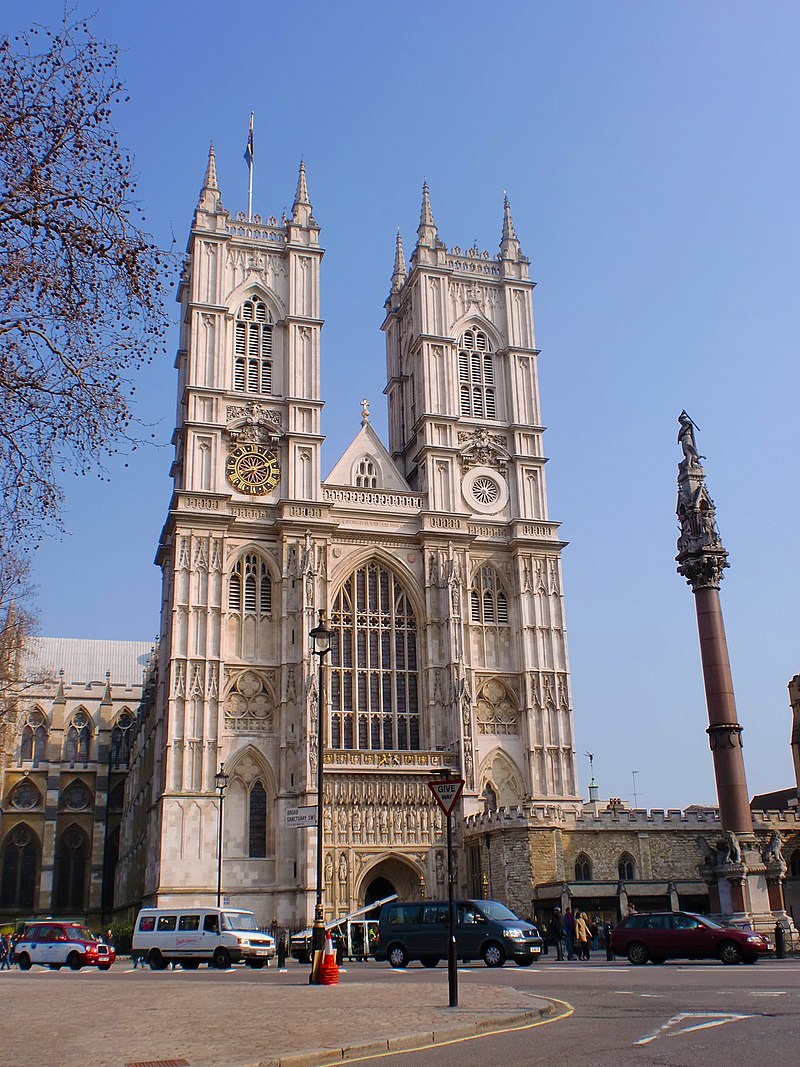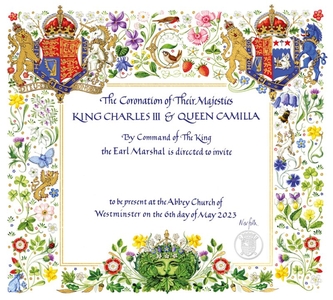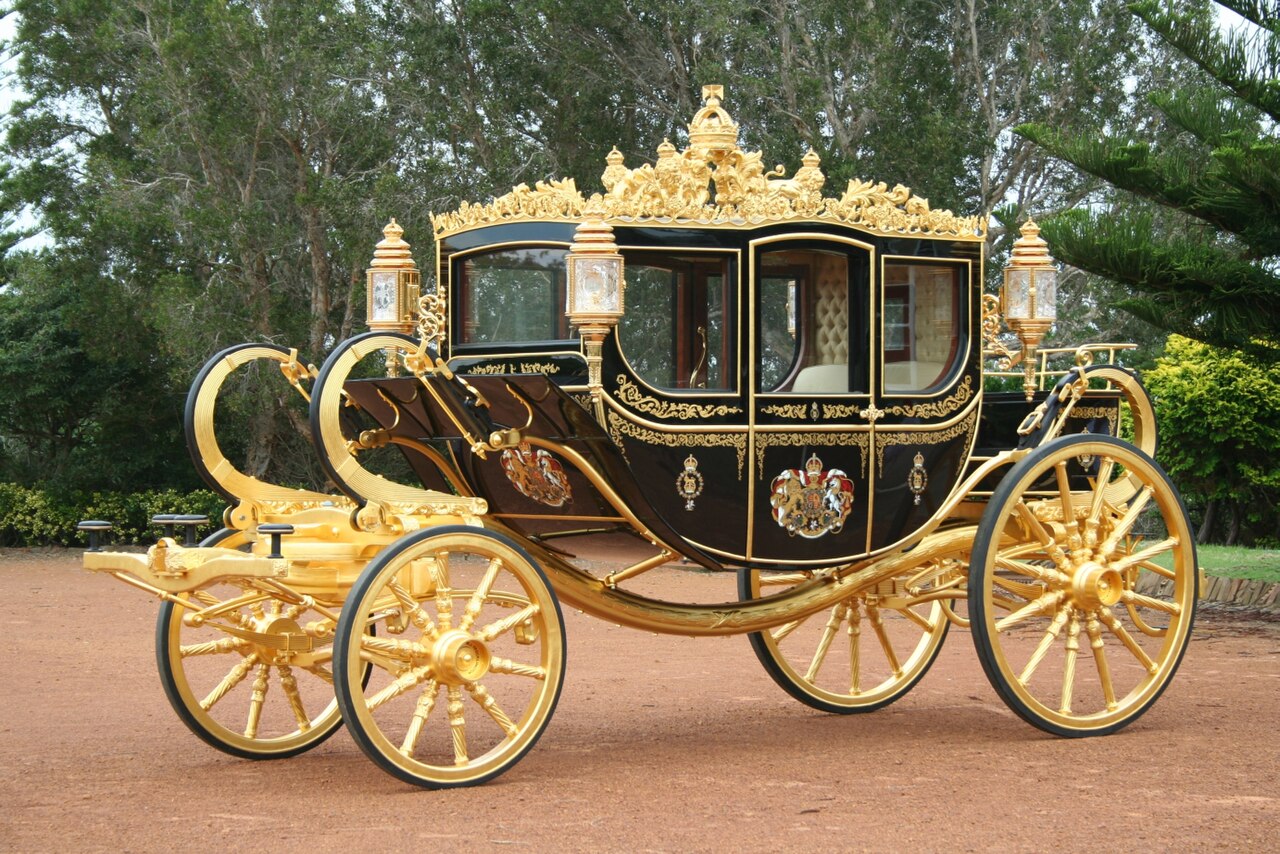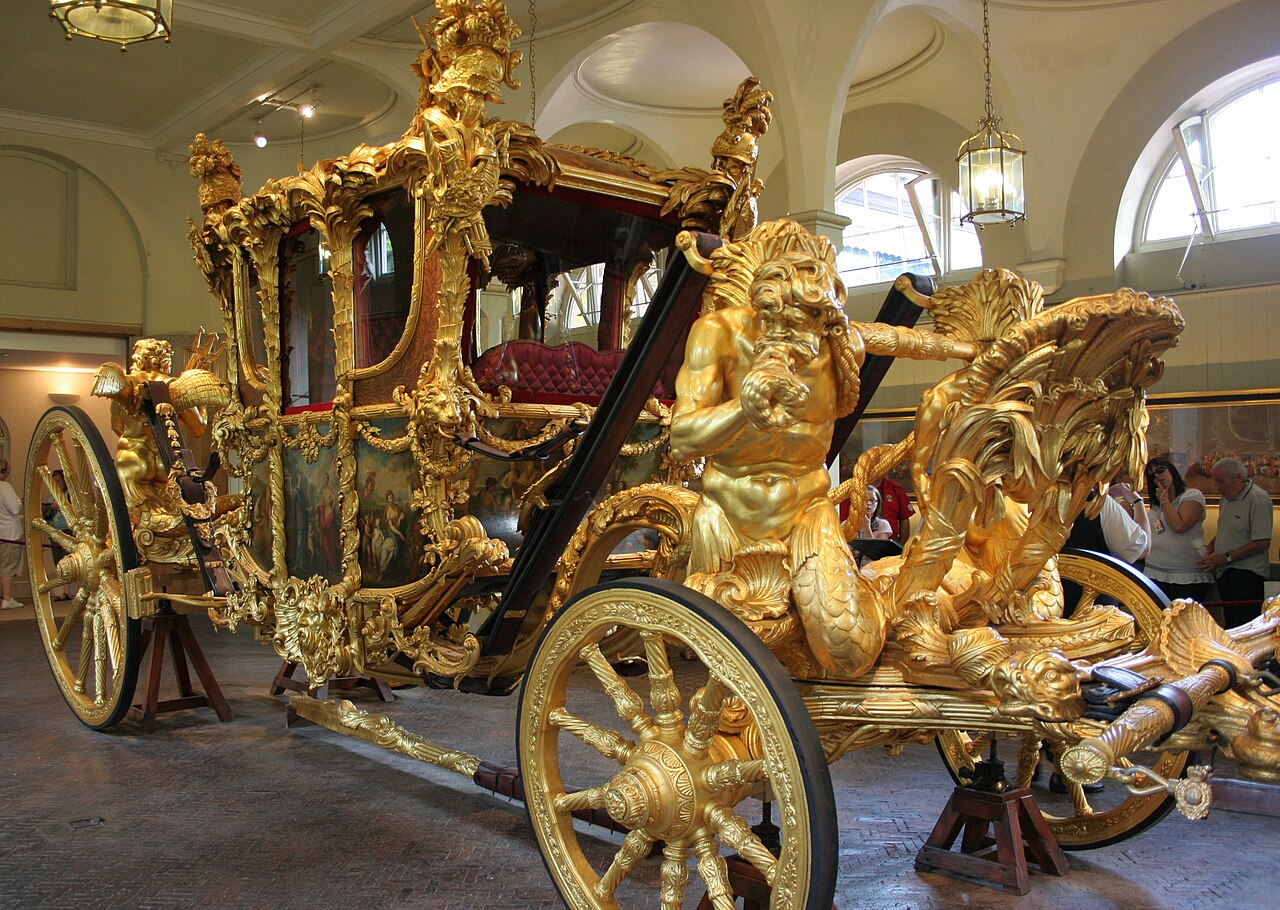by Susan Flantzer
© Unofficial Royalty 2023
Credit – By Coronation 2023 Emblem usage guidelines, Fair use, https://en.wikipedia.org/w/index.php?curid=73248220
This article has some basic information about the coronation of King Charles III and Queen Camilla. Because information may change or may not have been available at the time of the publication of this article, updates and changes can be expected. This article is linked in Unofficial Royalty: British Coronations, linked in the Royal News Recap which is published every day except Saturdays, and linked on Unofficial Royalty’s Facebook page pinned to the Featured area at the top of the page. Please check back at any of those sites for updated information.
Unofficial Royalty will be publishing coronation articles starting at the end of April.
- Which Monarchies Have Coronations? What Succession Ceremonies Do Other Monarchies Have?
- History of the Coronation of English and British Monarchs
- History of the Coronation of English and British Queen Consorts
- Westminster Abbey – The Coronation Church
- British Coronation Music
- Order of Service for the Coronation of the British Monarch
- Coronation Regalia
In addition, we already have the following published articles:
********************
Where and When Will The Coronation Take Place?

Westminster Abbey; Photo Credit – By Σπάρτακος – Own work, CC BY-SA 3.0, https://commons.wikimedia.org/w/index.php?curid=26334184
The coronation of King Charles III and Queen Camilla will take place at Westminster Abbey in London, England on Saturday, May 6, 2023, at 11:00 AM British Time. Most of our users are from the United States. United States Eastern Time is five hours earlier than British Time, so the coronation will start at 6:00 AM Eastern Time, and going through the rest of the time zones: Central Time 5:00 AM, Mountain Time 4:00 AM, Pacific Time 3:00 AM, Alaska Time 2:00 AM, and Hawaii Time 12:00 AM. If you live in a US state that does not observe Daylight Savings Time or in another country, you are on your own regarding time.
While the actual coronation starts at 11:00 AM British Time, the television coverage will start earlier. The guests will arrive much earlier and the procession from Buckingham Palace will take place earlier. If you want to see these events, get up earlier or use your DVR.
How Can I Watch The Coronation?
In the United Kingdom, the BBC, ITV, and Sky News will broadcast live from London. Specific details for the United States are not yet available. Major US networks like ABC, CBS, NBC, and CNN will likely provide coverage. It is also possible that BBC America may have coverage. Check back here at a later date.
Guests

The Coronation Invitation designed by Andrew Jamieson, a heraldic artist and manuscript illuminator; Credit – Wikipedia
A partial guest list will be included in Unofficial Royalty’s article about the coronation. If guests can be verified before the coronation date, a guest list may be included here.
There were 8,000 guests at the coronation of Queen Elizabeth II in 1953. Westminster Abbey was closed for five months prior to the coronation so that the construction needed for seating the 8,000 guests could be completed. However, because of current safety and health regulations, the capacity of Westminster Abbey is legally approximately 2,000.
In past recent coronations, all peers and their spouses and all Members of Parliament were invited to the coronations. Because of the limited space, only 20 Members of the House of Commons and 20 Peers from the House of Lords were invited to King Charles III’s coronation. This change has caused a stir among peers and Members of Parliament who believe they have a right to attend. The spouse of British Prime Minister and the Head of Government Rishi Sunak is the only invited spouse. The seven living past British Prime Ministers have also been invited. There are several peers who traditionally play roles in the coronation ceremony but right now their invitation status is not yet determined.
Traditionally, foreign sovereigns have not attended British coronations. Instead, members of their royal houses were sent to represent them. King Charles III has broken with that tradition and a number of foreign sovereigns have confirmed their attendance.
Also attending the coronation are 450 recipients of the British Empire Medal. They were invited to join the congregation at Westminster Abbey in recognition of their services and support to their local communities, especially during the COVID-19 pandemic.
Representatives from the Commonwealth of Nations and foreign dignitaries from other countries have also been invited. First Lady Jill Biden will represent her husband Joe Biden, President of the United States.
And of course, members of the British royal family, including Prince Harry, will be attending.
The Procession

The Diamon Jubilee State Coach; Credit – By Grahamedown – Own work, Public Domain, https://commons.wikimedia.org/w/index.php?curid=9426700
King Charles III and Queen Camilla will arrive at Westminster Abbey in a procession starting from Buckingham Palace. They will arrive in the 2014 Diamond Jubilee State Coach and return to Buckingham Palace in the 1762 Gold State Coach.

Credit – Time Out
The procession route is only 1.3 miles. The same route will be used for the return trip to Buckingham Palace. Charles’ route is the normal route royals use to get to Westminster Abbey: leave Buckingham Palace through the Centre Gate, and proceed down The Mall, passing through Admiralty Arch and south of King Charles I Island, down Whitehall and along Parliament Street, around the east and south sides of Parliament Square to Broad Sanctuary, arriving at Westminster Abbey.
The same route will be used to go back to Buckingham Palace. Queen Elizabeth II had somewhat the same route to the Abbey with a small .3-mile addition but had a five-mile return trip. On the map above, Charles’ route to and from is in red, Elizabeth’s route to the Abbey is in light blue and her route back to Buckingham Palace is in dark blue. Elizabeth’s route allowed for people to stand on 5.3 miles of street while Charles’ route allows for people to stand on only 1.3 miles of street.
The Coronation Ceremony

The Coronation Theatre at the coronation of Queen Elizabeth II; Credit – By BiblioArchives / LibraryArchives from Canada – Coronation of Queen Elizabeth II / uronnement de la Reine Elizabeth IIUploaded by oaktree_b, CC BY 2.0, https://commons.wikimedia.org/w/index.php?curid=19783528
King Charles III and Queen Camilla will be crowned in Westminster Abbey in a service conducted by Justin Welby, Archbishop of Canterbury assisted by Stephen Cottrell, Archbishop of York, Paul Butler, Bishop of Durham, Michael Beasley, Bishop of Bath and Wells, and David Hoyle, Dean of Westminster. It is expected that the coronation service will be much shorter than the three-hour coronation service of Queen Elizabeth II and will introduce some modern elements.
Like many other Christian churches, Westminster Abbey is built in the shape of a cross. The space where coronations happen, called the Coronation Theatre, is at the point at which the two parts of the cross meet, at the very center of Westminster Abbey, directly in front of the High Altar. It is here that the 700-year-old Coronation Chair, also called St. Edward’s Chair and King Edward’s Chair, on which the monarch sits for the majority of the service, is placed, facing the High Altar.
The coronation involves six basic stages based on the coronation service written by Saint Dunstan, Archbishop of Canterbury used in 973 for the coronation of Edgar the Peaceful, King of the English: the recognition, the oath, the anointing, the investiture/the crowning, the enthronement, and the homage.
Although King Charles III and Queen Camilla’s coronation service is expected to be shorter, it will most likely be similar to the 1937 coronation service of King George VI and Queen Elizabeth (later The Queen Mother), the last time a Queen Consort was crowned. See the links below.
Expect to see one of King Charles III’s grandchildren and three of Queen Camilla’s grandchildren and one of her great-nephews participating.
King Charles III will be attended by four pages of honour:
Queen Camilla will also be attended by four pages of honour:
- Gus Lopes, the Queen’s grandson, son of her daughter Laura Lopes
- Louis Lopes, the Queen’s grandson, son of her daughter Laura Lopes
- Frederick Parker Bowles, the Queen’s grandson, son of her son Tom Parker Bowles
- Arthur Elliot, the Queen’s great-nephew, son of her nephew Ben Elliot

St. Edward’s Crown; Credit – By Firebrace – Own work, Public Domain, https://commons.wikimedia.org/w/index.php?curid=116459012
King Charles III will be crowned with the traditional St. Edward’s Crown and Queen Camilla will be crowned with Queen Mary’s Crown, first worn by King Charles’ great-grandmother Queen Mary when she was crowned as Queen Consort with her husband King George V in 1911.
Coronation Music
The music at the coronation of King Charles III, who was very much involved in the music selection, will feature twelve new orchestral, choral, and organ pieces commissioned for the coronation including a coronation anthem based on Psalm 98 by Andrew Lloyd Webber, Baron Lloyd Webber. One of the liturgical sections of the ceremony will be performed in Welsh in tribute to King Charles III’s long tenure as Prince of Wales. At King Charles III’s request, Greek Orthodox music will be included in tribute to his late father Prince Philip, Duke of Edinburgh, born a Greek prince.
I Was Glad, with text from Psalm 122, has been sung at the entrance of the monarch at every coronation since that of King Charles I in 1626. Sir Hubert Parry wrote a setting of the psalm for the coronation of King Edward VII in 1902. It was also used for the coronations of King George V, King George VI, and Queen Elizabeth II. Sir Hubert Parry is listed as a composer for the coronation of King Charles III so it is possible that his setting of I Was Glad will be sung.
At the coronation of every monarch since the coronation of King James II in 1685, the King’s (or Queen’s) Scholars of the Westminster School have had the privilege of acclaiming the monarch by shouting “Vivat” during the monarch’s procession from the Quire of Westminster Abbey towards the Coronation Theatre in front of the High Altar. In recent past coronations, The Vivat was incorporated into Sir Hubert Parry’s anthem I Was Glad, at the end. The Latin version of the monarch’s name is used and the last three Queen Consorts were also acclaimed with their husbands. Expect to hear “Vivat, Rex! / Vivat, Rex Carolus! / Vivat! Vivat! Vivat!” and “Vivat, Regina! / Vivat, Regina Camillus! / Vivat! Vivat! Vivat!”
In 1727, George Frederic Handel composed four coronation anthems for the coronation of King George II and his wife Queen Caroline. One of the anthems, Zadok the Priest, has been played at every British coronation since the coronation of King George II in 1727. Handel is listed as a composer for the coronation of King Charles III and so it is likely that we will hear Zadok the Priest.
Zadok the Priest is the most famous of the anthems and is every bit as rousing as Handel’s Hallelujah Chorus from the oratorio The Messiah. The text of Zadok the Priest comes from the biblical account of the anointing of King Solomon of ancient Israel by Zadok, the High Priest of Israel and the prophet Nathan, and the rejoicing of the Israelites. These words have been used in every English coronation since that of King Edgar the Peaceful at Bath Abbey in 973, and Handel’s setting has been used at every British coronation since 1727, traditionally performed just prior to the sovereign’s anointing.
From 1 Kings 1:34-45:
Zadok the priest and Nathan the prophet anointed Solomon king.
And all the people rejoiced and said:
God save the King! Long live the King! God save the King!
May the King live forever. Amen. Hallelujah.
After the Coronation

The Imperial State Crown; Credit – By Cyril Davenport (1848 – 1941) – G. Younghusband; C. Davenport (1919). The Crown Jewels of England. London: Cassell & Co. p. 6. (See also The Jewel House (1921) frontispiece.), Public Domain, https://commons.wikimedia.org/w/index.php?curid=37624150
It is expected that King Charles III and Queen Camilla will proceed to St. Edward’s Chapel, directly behind the high altar, where the Shrine of St. Edward the Confessor, King of England stands. King Charles will give St. Edward’s Crown, the Sceptre, and the Rod to the Archbishop of Canterbury who will lay them on the altar in the chapel. After a short period, King Charles III will emerge from St. Edward’s Chapel wearing the Imperial State Crown with the Sceptre with the Cross in his right hand and the Orb in his left hand. King Charles III and Queen Camilla, still carrying her Sceptre with the Cross in her right hand and the Ivory Rod with the Dove in her left hand, will leave St. Edward’s Chapel to the singing of the National Anthem and then proceed up the aisle to the West Door of the Westminster Abbey. They will return to Buckingham Palace in the Gold State Coach using the same route as their outgoing route.

Gold State Coach; Credit – By Crochet.david (talk) – Own work, CC BY-SA 3.0, https://commons.wikimedia.org/w/index.php?curid=7395195
This article is the intellectual property of Unofficial Royalty and is NOT TO BE COPIED, EDITED, OR POSTED IN ANY FORM ON ANOTHER WEBSITE under any circumstances. It is permissible to use a link that directs to Unofficial Royalty.
